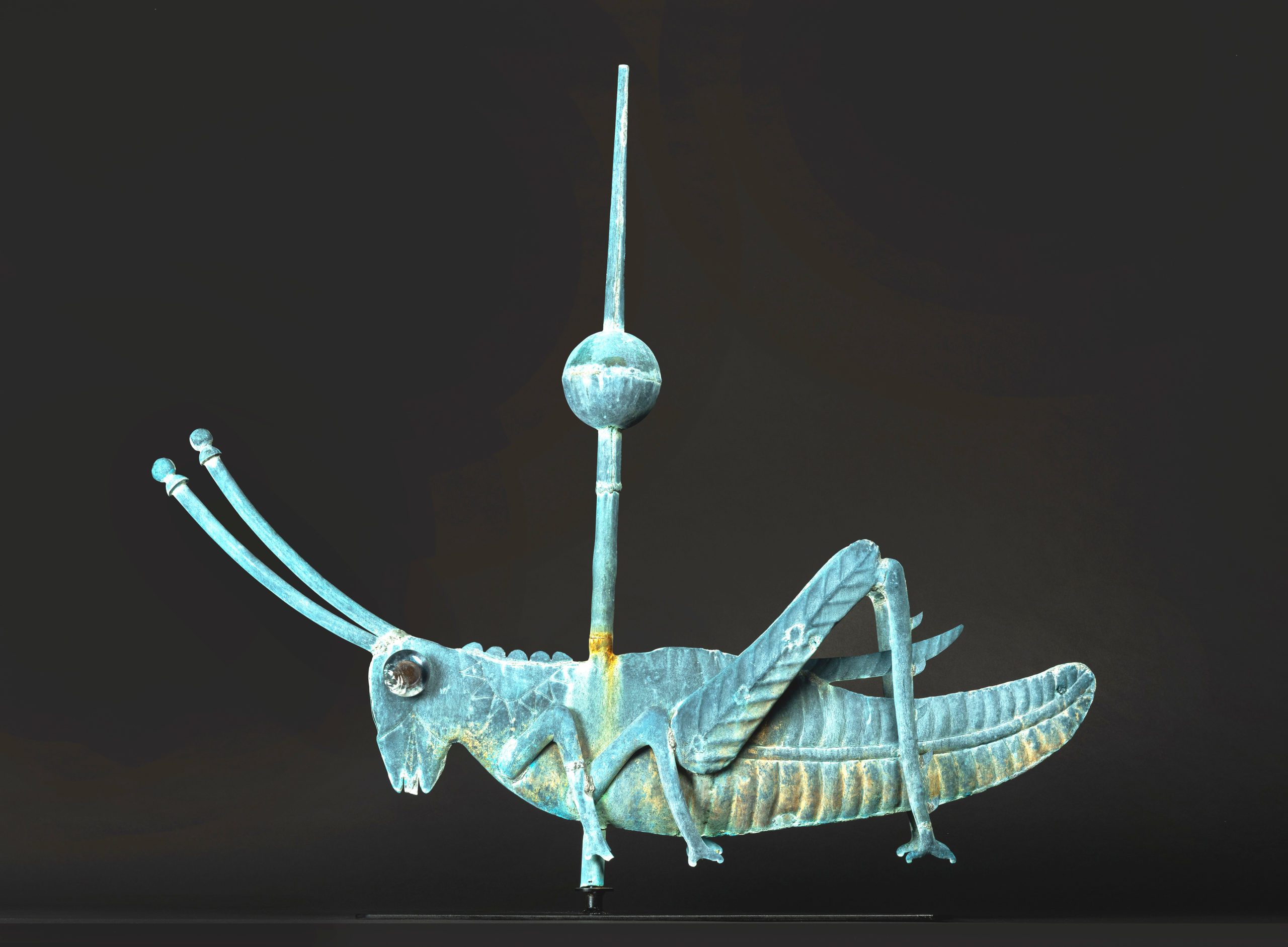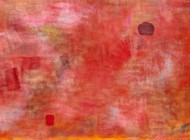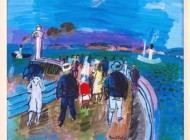
NEW YORK CITY — Sotheby’s has announced its January 23 Important Americana sale will include the Faneuil Family molded copper full-bodied grasshopper weathervane, attributed to Shem Drowne (1683-1774), Boston, Mass., circa 1740. The 42 ½-inch long and 50 inch tall weathervane carries a pre-sale estimate of $300/500,000.
It is believed to be the earliest known American weathervane ever to be offered at auction.
For the past 280 years, a weathervane in the shape of a grasshopper has risen above the streets of Boston, atop one of its most famous buildings, Faneuil Hall. The building, designed by John Smibert (1688-1751), was built in 1742 by Peter Faneuil (1700-1743) due to what he saw was a need for the city to have a central public market hall. He commissioned the well-known metalsmith Shem Drowne (1683-1774) to construct the grasshopper weathervane.
By all accounts, Drowne was a logical choice to craft the weathervane for Faneuil Hall. By 1742, Drowne had already made weathervanes for other public buildings in Boston, including a Native American Archer in 1716 for Boston’s Province Hall and a Rooster weathervane in 1721 for Boston’s New Brick Church.2 Drowne made a second rooster, or weathercock weathervane, for the Third Parish Church in Newburyport, Massachusetts in 1725.3 Subsequently in 1740, Drowne was commissioned to build a banner weathervane for Boston’s Old North Church, where it still resides today.
Until now, only the five examples listed above of Shem Drowne’s work were known to survive.
During the nearly 300 years since the construction of Faneuil Hall and Peter Faneuil’s death, and the nearly 200 years since the destruction of the Faneuil Mansion, this second grasshopper weathervane disappeared into obscurity. It was acquired in Massachusetts, circa 1900, by Captain Lucius Bradford (1864-1939) of Newport, N.J., who was told that it had been on top of a New Hampshire barn. He stored it inside as a decoration, and it was inherited by his son Leslie Bradford (1895-1987). It continued to be passed down through successive generations of the family until purchased by the current owner.
The construction of this Shem Drowne vane, including its large glass eyes, directly relates to that of the Faneuil Hall example. The appearance of this exceedingly important weathervane is an extraordinary opportunity to acquire a piece of the historical fabric of America.
For more information, www.sothebys.com or 212-606-7000.




